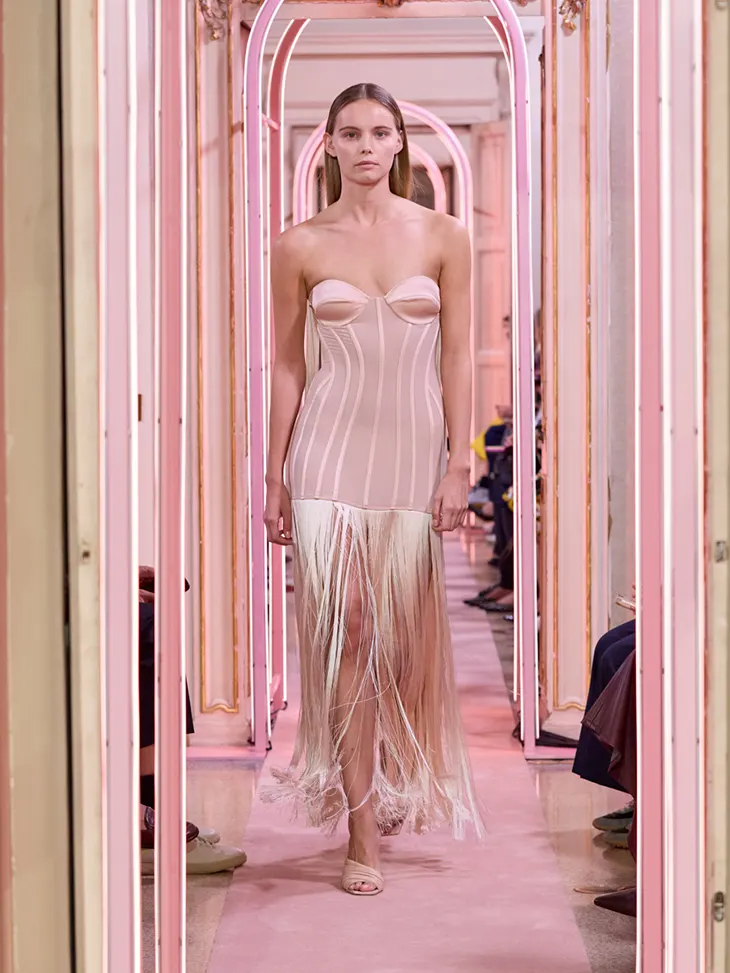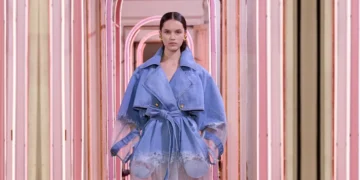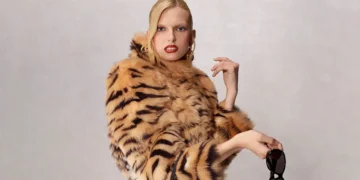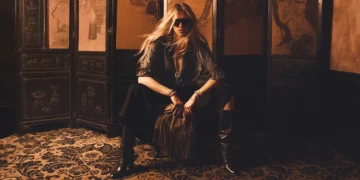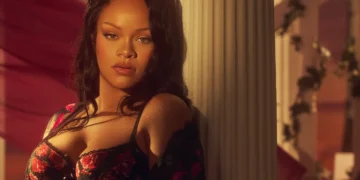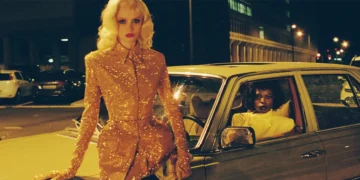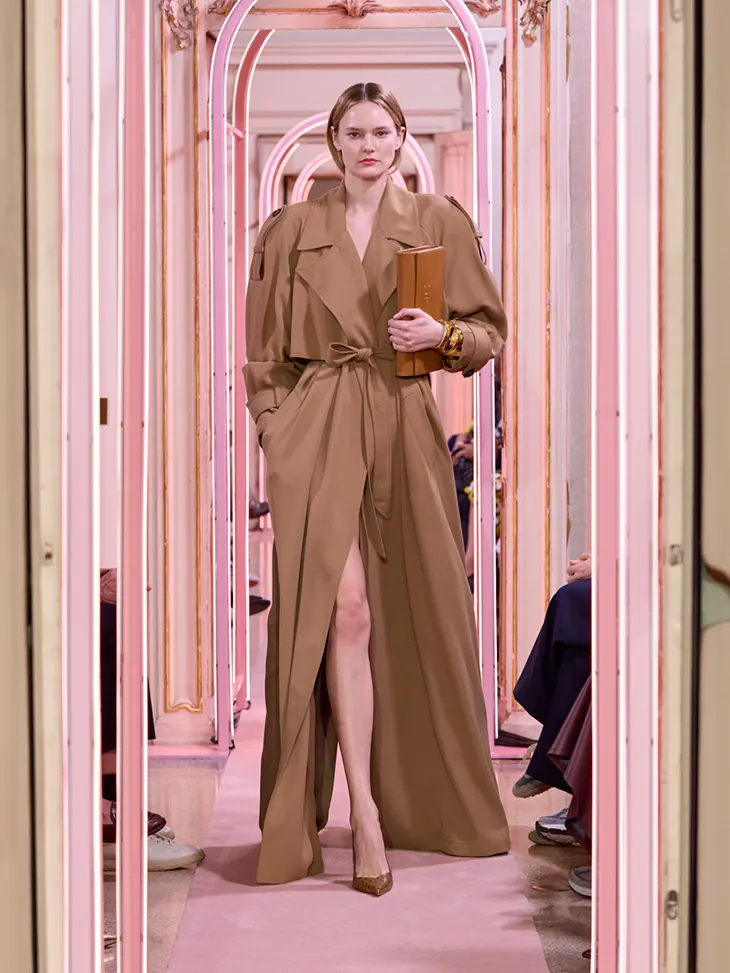
Elisabetta Franchi chose Milan’s Palazzo Acerbi, long referred to as “The House of The Devil,” as the setting for her Spring Summer 2026 show. The maison claimed the historic space not only for its architecture but for its symbolism, an address layered with mystery and strength, reshaped here into a vision of the future. Within its walls, the designer opened a new chapter, grounding the collection in ten words that define her language: Empowerment, Femininity, Seduction, Determination, Beauty, Strength, Dedication, Energy, Evolution, and Future.
The collection unfolded through contrasts of light and shadow. Mystery gave way to revelation, while softness encountered strength. Within this dynamic, a woman emerged, seductive, magnetic, and independent. She commanded the stage with silhouettes that sculpted the figure without restriction. Fringes in tripolino, leather, and organza created flowing detail, their movement extending the fluidity of the garments into space.
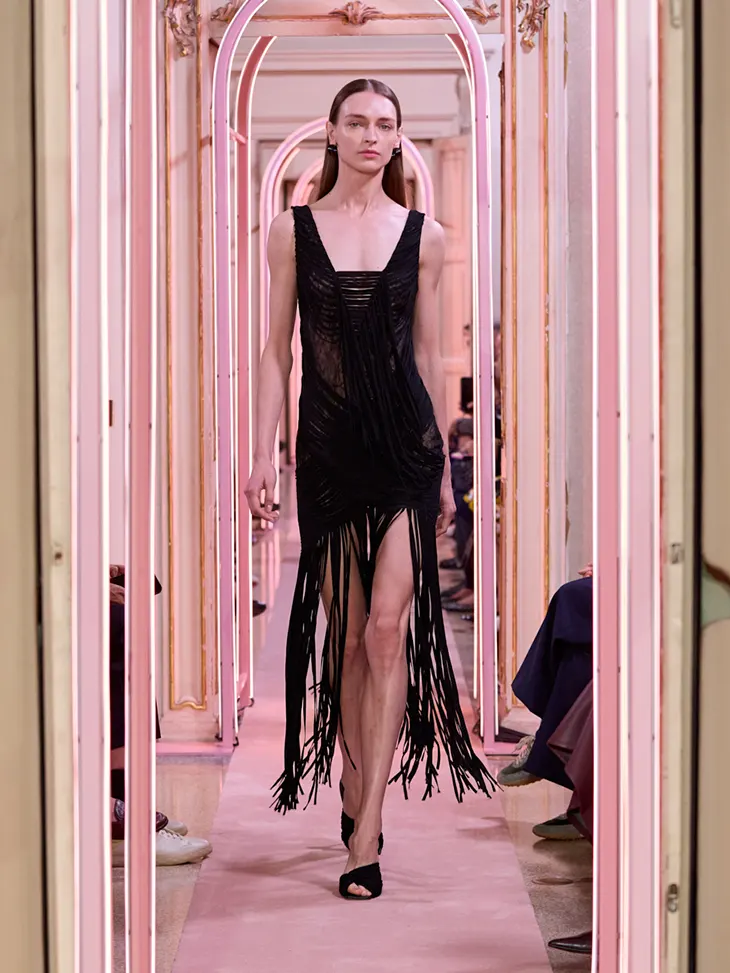
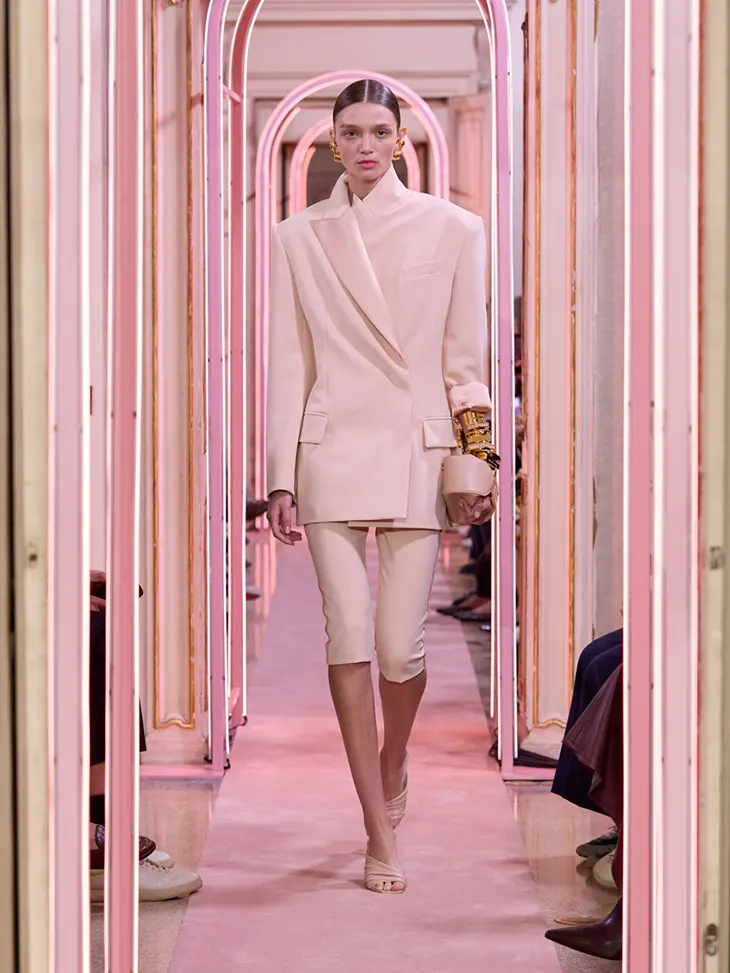
Jersey and tulle appeared draped across the body, revealing delicate transparencies. Net-effect embroidery added rhythm to the surfaces, amplifying motion. Dresses with fluid asymmetries conversed with capri trousers and long skirts positioned low on the waist. Tailored blazers emphasized broad shoulders, projecting confidence, while knitwear lay against the skin like a second layer, reinforcing the idea of natural elegance.
Outerwear advanced the maison’s vocabulary. Blousons and pea coats came in satin with raised textures that recalled ostrich leather. The trench coat expanded into oversized proportions, imposing in presence yet sensual in form. It carried functionality while introducing an erotic charge, proving outerwear central to the story. Denim added another layer of character through abrasions and fraying, injecting the collection with an urban edge that spoke to freedom and nonchalance.
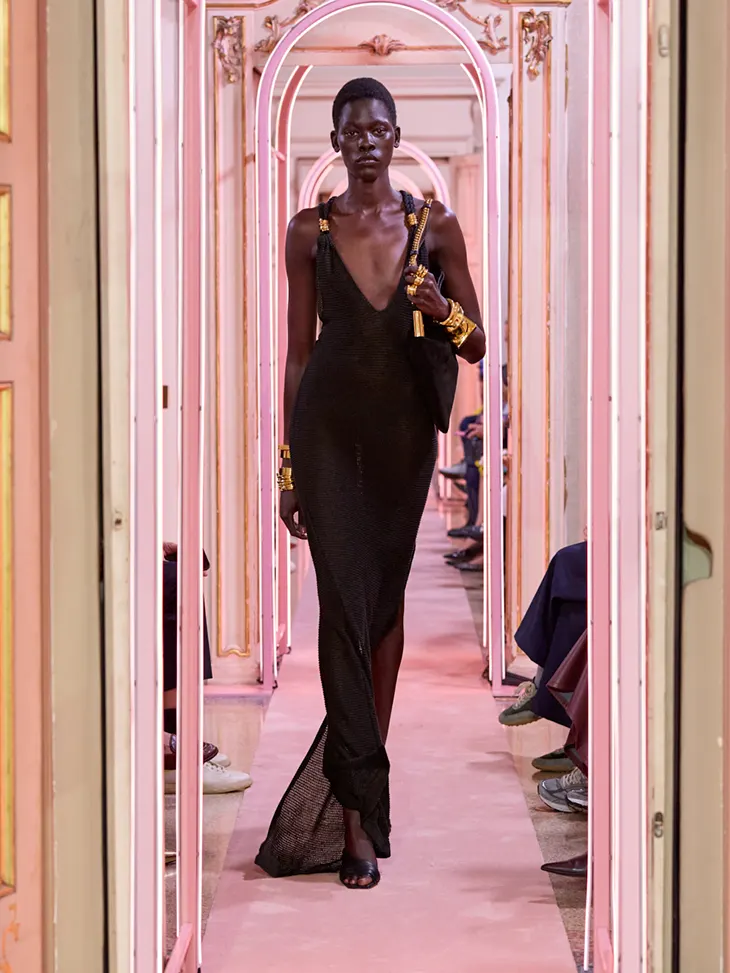
Black, butter, nude, and boudoir pink alternated with cocoa and clay, reinforcing shades that the maison considers signatures. Each tone contributed to the dialogue of contrasts, moving between lightness and depth. Accessories reinforced this message. Soft bags appeared in both maxi and mini scales, designed with gestures in mind. Shoes included nappa or jersey mules, suede pumps, and slingbacks in ostrich-effect leather. Jewelry asserted scale and strength, large metal bracelets stacked decisively, symbols of character and presence.
The collection expressed itself as a vocabulary of values that turned clothing into more than attire. Each garment carried intent, transforming into a manifesto of identity and a tool for women to narrate their own stories.
